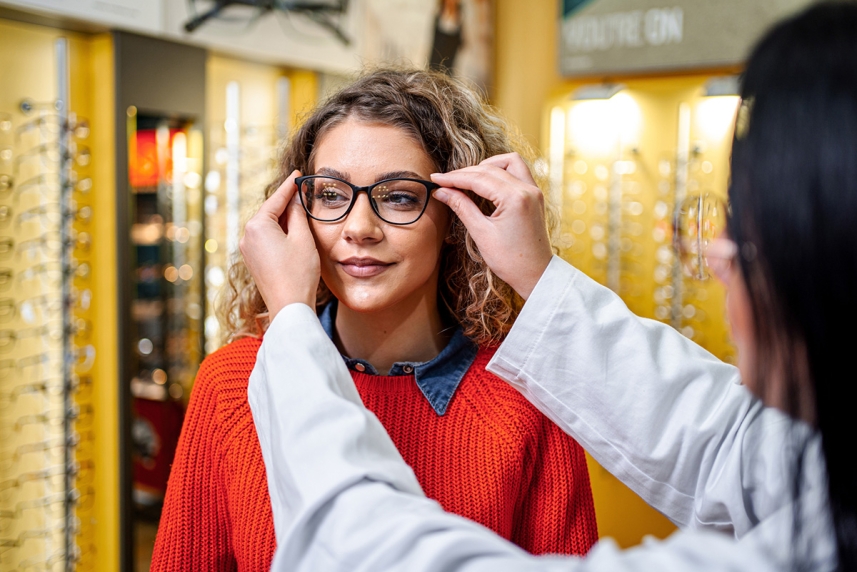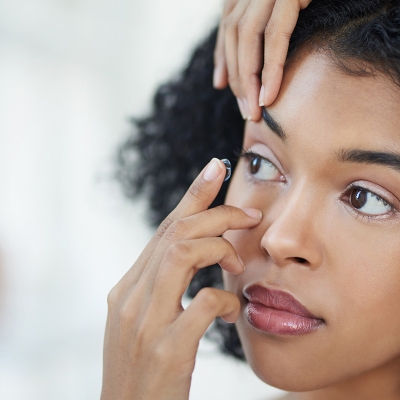How to find the best pair of glasses based on face shape
Here are some tips to follow before buying that next set of specs.

Going shopping for a new pair of eyeglasses can be a lot of fun. Frames come in so many colors and designs that it may be tough to decide on just 1 pair. But while color may matter in terms of a person’s skin tone and hair color — and sense of style — it may not be the most important factor.
What may be most important is the shape of a person’s face, because choosing the best pair of frames might be all about balance. That means picking frames that complement your features — the length and width of your face and the size of your cheeks and forehead.
Still, before choosing a pair of eyeglasses, it’s a good idea to get some expert advice from an eye care provider, based on your lens prescription, notes Karl Citek, O.D., Ph.D. He’s a professor of optometry at Pacific University College of Optometry in Forest Grove, Oregon. “A too-large frame could result in an excessively thick lens that would be heavier than necessary,” he says.
The measurements also need to be correct, too. “An incorrect fit can cause issues with glasses staying in place or sliding off. It can also cause discomfort, such as pinching and headaches, and even lead to additional vision problems,” says Dr. Citek.
Ready to find the perfect pair? Here’s what to know about picking new eyeglasses based on different face shapes.
Need new glasses? In 3 easy steps, you could have a new pair on the way. Check your vision coverage, select your favorite frames, then check out. Done!
Where might a person start when shopping for new eyeglasses?
When shopping for new eyeglasses, it’s a good idea to go right to the source first: an eye care provider or their staff. They will likely know a person’s eyes and prescription the best. Besides Dr. Citek, that’s also backed up by Geoffrey Goodfellow, O.D. He’s an associate professor of optometry at the Illinois College of Optometry in Chicago.
Also good to remember, according to Dr. Goodfellow, is that “contrasting face and frame shapes often produce better balance and appearance.” That means when picking frames, a person may want to choose the opposite shape from their face’s shape to soften or highlight its angles.
Alternatively, many online retailers, like www.uhcglasses.com, have virtual try-on options. You can see what frames look best in real-time. If you’re a UnitedHealthcare Vision member, you can use your vision benefits at any of our online retail options.
Here’s how to identify the shape of a person’s face — and the right type of eyeglasses frames for them to get based on that shape.
Face shape #1: Round.
People with round faces have fuller cheeks and not as many angles (such as a pointy chin or prominent cheekbones). The width of their face may be the same as the length of their face.
Best choice of frames: Pick frames that are wider. Rectangular frames with larger, squarer lenses may help a round face look thinner and longer.
Face shape #2: Square.
If a person’s face is square, it may look more angled. They may have a well-defined jawbone, along with a wide forehead, chin and cheekbones.
Best choice of frames: Soften the face with rounder or oval-shaped frames. Go for lenses that are a bit wider and heavier on top to potentially make the face look longer.
Face shape #3: Oblong.
An oblong face is longer and narrower than it is wide.
Best choice of frames: The face may look shorter if the frames are deeper rather than wider, advises Dr. Goodfellow. A good way to tell is if the depth of the lens is more vertical.
“Oblong faces may also do well with frames where the temples attach lower to the frame front,” says Dr. Goodfellow. That’s because the temples are a horizontal dividing line across the face, so a lower temple attachment provides more balance between the face’s top and bottom halves, he adds.
Face shape #4: Heart shaped.
People with heart-shaped faces have wide brows and high cheekbones. The face also tapers to a smaller, sometimes pointed chin. While looking in the mirror, draw a valentine heart around the face. If the shape roughly matches the face’s outline, it’s heart shaped.
Best choice of frames: Try frames that are wider under the eyes. This may enhance the width of the face. Dr. Goodfellow suggests going with frames that are:
- Lighter in color
- Lightweight and/or lightweight metal (such as titanium, stainless steel and beryllium)
- Rimless
Face shape #5: Diamond.
A person with a diamond-shaped face has a small forehead, a pointed chin, and high cheekbones.
Best choice of frames: Choose frames with straight lines, such as squares or rectangles. Round frames or metal frames in a light color may also be a good option.
Face shape #6: Oval.
A person with an oval-shaped face has one that’s perfectly balanced. With oval faces, the features may be proportional. The forehead isn’t too large, and the chin isn’t too pointed or round. An oval face is longer than it is wide.
Best choice of frames: “The oval face tends to be the most versatile face shape and often looks pleasing in most any shape frame,” says Dr. Goodfellow. Try round, rectangular or aviator frames. The best frame should be slightly wider than the face.
Do a person’s frames have to align with their face shape?
The above list is just a guide to face shapes, frame styles and possible preferences. A person with a heart-shaped face may like a different style of frames, and that’s perfectly fine. Someone with a diamond-shaped face may look great in a pair of oversized rectangular glasses.
Either way, it’s a good idea to let the eye care provider weigh in after the eye exam. They will help customers pick the right frame for their face shape — and their vision.
Ready to ditch your glasses or contacts and go for LASIK? Get more info on LASIK surgery now.


